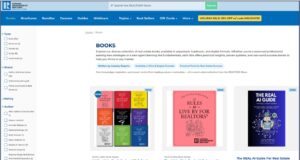Coalition for Sensible Housing Policy Joins 326 Members of U.S. Congress Calling for Changes to Proposed QRM Regulations
Diverse Coalition Releases White Paper Outlining Shared Concerns
WASHINGTON, D.C. – June 22, 2011 – (RealEstateRama) — A diverse coalition of 44 consumer organizations, civil rights groups, lenders, real estate professionals and insurers joined with Members of Congress today urging regulators to make important changes to proposed mortgage lending regulations. The Coalition for Sensible Housing Policy released a joint white paper detailing how the proposed risk retention regulation, and the failure to properly define exemptions for Qualified Residential Mortgages (QRM), would significantly harm creditworthy borrowers while frustrating the nation’s fragile housing recovery.
The proposed QRM definition is part of the risk retention regulations required by the Dodd-Frank Act, which Congress enacted last year. The risk retention provisions require the issuers of mortgage-backed securities retain a portion of the risk of potential loss on those assets. Recognizing that requiring risk retention would impose increased costs even on creditworthy borrowers, Congress specified that well-underwritten mortgages with consumer-friendly features – “qualified residential mortgages” – should be exempt from the risk retention requirement and directed regulators to promulgate regulations to establish the exemption.
Congressional supporters of the Qualified Residential Mortgage (QRM) provision – Senators Mary Landrieu (D-LA), Kay Hagan (D-NC) and Johnny Isakson (R-GA) and Congressmen John Campbell (R-CA) and Brad Sherman (D-CA) – held a press conference today urging regulators to follow the clear legislative intent behind the provision. These policymakers are concerned that aspects of the proposed rule requiring borrowers to have at least a 20 percent down payment or equity to qualify for the exemption go beyond Congressional intent and could hurt, rather than help, the housing recovery. Congress considered and rejected a down payment requirement in the Dodd-Frank legislation because it determined that the cost of excluding responsible middleclass families would exceed the modest improvement in default rates.
More than 320 current members of Congress agree. Joint letters from 44 Senators and 282 members of the House of Representatives also were released today. The Senate co-signers called the proposed QRM regulation “unduly narrow” and reiterated that “[w]ell underwritten loans, regardless of down payment, were not the cause of the mortgage crisis House members argued that the proposed QRM “would particularly harm first-time and minority homebuyers” and urged regulators “to consider lower down payment loans that have mortgage insurance (MI) as constituting a QRM.
At a time when Washington is increasingly polarized, the diversity and breadth in Congress as well as within the Coalition makes clear that the proposed risk retention regulation, and the failure to properly define QRMs, represents a significant and alarming threat to credit-worthy homeowners and the nation’s fragile housing recovery.
The Coalition for Sensible Housing Policy today submitted the white paper, “Proposed Qualified Residential Mortgage Definition Harms Creditworthy Borrowers While Frustrating Housing Recovery” to regulators as a joint comment letter. The 44 organizations that signed on to the white paper call on regulators to “redesign a QRM that comports with Congressional intent: encourage sound lending behaviors that support a housing recovery, attract private capital and reduce future defaults without punishing responsible borrowers and lenders.”
The white paper identified a number of significant problems in the proposed QRM framework:
- High Down-Payment Requirements Not Necessary for Creditworthy Borrowers. An increase in the down payment requirement from 5% to 20% lowers default rates by aboutthree-quarters of one percentage point on average based upon recent historical loan performance data.
- Down-Payment Requirements Put Homeownership Out of Reach for Creditworthy Borrowers. It would take a family with the national median income of $54,474approximately 16 years to save a 20% down payment (plus closing costs) to purchase the median price home of $172,900 (2010 data). A 10% down payment requirement is little better; it would take a median income family almost 10 years to save for a 10% down payment. These are conservative estimates that assume all savings go toward the down payment and that the family is not also saving for retirement, education or other purposes.
- Existing Homeowners Are Also Harmed by This Proposal. Sharp declines in home prices in recent years mean that more than half (52%) of current American home owners have less than 25% equity in their homes, the standard that will be required to get a QRM-eligible refinance mortgage. The impact is even worse in the nation’s hardest hit housing markets.
- Congress Rejected Down Payment Requirements, Focused on Quality Underwriting. Congress required regulators to take into consideration “underwriting product features that historical loan performance data indicate result in a lower risk of default.” With respect to low down payment loans, the statute specifically recommends eligibility for the QRM standard loans that are covered at the time of origination by mortgage insurance or other credit enhancements to the extent these protections reduce the risk of default.
- Creditworthy Minority Households Will Be Particularly Hard Hit by the Narrow QRM Standard. These families already have significantly lower before-tax family incomes and net worth than white households, which translate into sharply lower homeownership rates. Current underwriting standards are already very restrictive, and the unduly narrow QRM proposal will further tighten standards for creditworthy lower income and minority families.
- Regulators Have Offered No Formal Estimate of the Cost Impact of Risk Retention and the Narrow QRM Exemption. The regulators acknowledge that, by design, as many as 80% of today’s borrowers would not be eligible for QRMs, but they made no formal attempt to estimate the cost of imposing risk retention on the vast majority of the market. Most private estimates of the cost of risk retention indicate that loans that do not qualify for the QRM (e.g., those without 20% or more in down payment or equity) will cost almost a full percentage point more than exempt QRMs.
- The Narrow QRM Will Delay the Return of Fully Private Capital Back into the Mortgage Market. This is contrary to the purpose of the QRM, which was intended to define well-underwritten, safe, and stable mortgages that would attract responsible liquidity back to the private market and be accessible to a broad range of borrowers. Mortgage securitization pioneer Lew Ranieri has said: “The proposed very narrow QRM definition will allow very few potential homeowners to qualify. As a result, it will complicate the withdrawal of the Government’s guarantee of the mortgage market… and delay the establishment of broad investor confidence necessary for the re-establishment of the [residential mortgage backed securities] market.”
Coalition for Sensible Housing Policy
| American Bankers Association American Escrow Association American Financial Services Association American Land Title Association American Rental Property Owners and Landlords Association Asian Real Estate Association of America Black Leadership Forum Center for Responsible Lending Colorado Mortgage Lenders Association Community Associations Institute Community Mortgage Banking Project Community Mortgage Lenders of America Community Reinvestment Coalition of North Carolina Consumer Federation of America Council Of Federal Home Loan Banks Credit Union National Association Enterprise Community Partners, Inc. HomeFree USA Independent Community Bankers of America International Association of Official Human Rights Agencies Louisiana Bankers Association Mortgage Insurance Companies of America |
NAACP National Association of Federal Credit Unions National Association of Hispanic Real Estate Professionals National Association of Home Builders National Association of Human Rights Workers National Association of Neighborhoods National Association of Real Estate Brokers National Association of REALTORS® National Community Reinvestment Coalition National Fair Housing Alliance National Housing Conference National NeighborWorks Association National Urban League National Real Estate Investors Association North Carolina Institute for Minority Economic Development Real Estate Services Providers Council Real Estate Valuation Advocacy Association Realty Alliance Texas Bankers Association U.S. Conference of Mayors Mortgage Bankers Association Worldwide ERC |
For more information: Kathleen Day at (202) 349-1871 or ; or Amanda Deaver at (202) 207-3631 or
.
###
About the Center for Responsible Lending
The Center for Responsible Lending is a nonprofit, nonpartisan research and policy organization dedicated to protecting homeownership and family wealth by working to eliminate abusive financial practices. CRL is affiliated with Self-Help, one of the nation’s largest community development financial institutions













